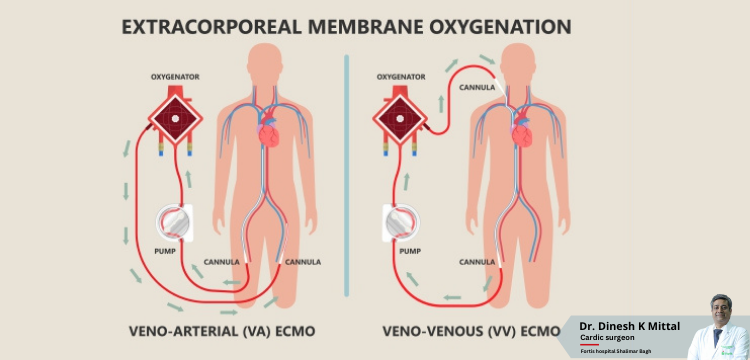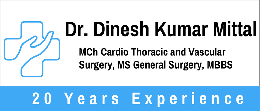ECMO: Last Resort for Many Heart and Lung Situations

The human heart and lungs play a significant role in our existence; there are times when the heart’s strength declines, and the lungs’ failure occurs due to the weight of disease or trauma. This situation causes the body to drain out of oxygen and makes the health vulnerable.Every year, millions of people face severe heart and lung problems that could be life-threatening. In these critical situations, it is when ECMO comes to play. What’s incredible is that ECMO offers a high chance of survival, reaching up to 70%, even in the most challenging cases.
Around the world, more than 20,000 ECMO procedures are done every year. This happens on different continents, and it’s a lifeline for people when nothing else seems to work. It’s like a global safety net for those in the most critical condition.
Therefore, ECMO emerged as a medical sector revolution to ease patients suffering from various heart and lung conditions. The role of ECMO becomes crucial when traditional medicine courses and conventional therapies fail to give better outcomes for the patient’s health. But the question is, do people still breathe on ECMO? Does it work in providing a better result? This blog will let you understand all these things. Let’s dig in.
What is ECMO?
ECMO stands for extracorporeal membrane oxygenation, an advanced medical treatment option for individuals suffering from life-threatening heart and lung complexities. It helps in performing the life support system for the heart and lungs. It supports the body in oxygenating the blood and deoxygenating the carbon dioxide from it.
In ECMO, the body’s blood goes through a circuit that acts as a natural process of the heart and lungs. With the help of the oxygenator, oxygen is added, and carbon dioxide is excluded from the body. ECMO does not offer just temporary support to the lungs. Still, it can also provide a channel for your body to heal smoothly. ECMO helps patients recover the damaged body tissue and enhances the value of their overall health and well-being.
What are the Leading Concerns and Side Effects of ECMO?
Although the heart still beats on ECMO, there are some side effects of ECMO, too, which include –
- Bleeding and Infection
- Formation of blood clots,
- and organ damage sometimes.
Major Types of ECMO
Dr. Dinesh Kumar Mittal, a well-known specialist in critical care, is crucial in selecting ECMO (Extracorporeal Membrane Oxygenation) types, providing the optimum therapy for patients. There are three main types of ECMO:
- Veno-Arterial ECMO: This kind supports both the heart and the lungs at the same time. It is used when a patient’s heart and lungs cannot perform their critical duties. The patient’s blood is oxygenated outside the body and returned to an artery during this treatment, ensuring the body obtains the essential oxygen.
- Veno-Venous ECMO: Designed mainly for lung problems, Veno-Venous ECMO relieves the lungs’ normal oxygenation obligations. It oxygenates the blood outside via a vein before returning it to the body via another vein. This method is helpful when the heart is in good working order, but lung difficulties remain.
- Veno-Arterio-Venous ECMO: Dr. Mittal uses a mix of Veno-Venous and Veno-Arterial ECMO for patients with heart and lung issues. His knowledge is critical in selecting the appropriate ECMO technique for complex cases, ensuring patients receive the finest care customized to their needs.
How is ECMO Surgery Performed?
Dr. Dinesh Kumar Mittal, an expert critical care specialist, plays a pivotal role in the complex yet life-saving surgical procedure known as Extracorporeal Membrane Oxygenation (ECMO). This procedure offers necessary cardiac and respiratory support to patients in dire need. Dr. Mittal’s expertise guides the ECMO process, ensuring patients receive the best care tailored to their conditions.
Cannulation: This crucial stage involves the insertion of specialized tubes called cannulas into the patient’s blood vessels. Dr. Mittal carefully assesses the patient’s needs and selects the appropriate cannulation method. There are two primary types:
- VV ECMO (Veno-Venous ECMO): In cases of severe respiratory failure, Dr. Mittal opts for VV ECMO. This technique involves inserting a large cannula into a vein to withdraw deoxygenated blood from the body. In contrast, another cannula is placed in a different vein to return oxygenated blood, providing essential respiratory support.
- VA ECMO (Veno-Arterial ECMO): VA ECMO becomes the preferred option for patients battling cardiac and respiratory failure. Dr. Mittal skillfully inserts one cannula into a vein to withdraw deoxygenated blood and another into an artery to restore oxygenated blood, providing comprehensive cardiac and respiratory support.
ECMO Circuit Connections: The inserted cannulas are then carefully connected to the ECMO Circuit, a system comprising a pump, tubing, and oxygenator. Dr. Mittal ensures that this circuit is perfectly set up. The pump facilitates blood movement while the oxygenator adds oxygen and removes carbon dioxide.
ECMO Support: Once the ECMO circuit is operational, it provides the essential cardiac and respiratory support required by the patient. Dr. Mittal, alongside a dedicated medical team, closely monitors the patient’s condition, making adjustments to the circuit as necessary to optimize support and care.
Decannulation: As the patient’s condition improves, Dr. Mittal and the medical team gradually reduce ECMO support. This process involves the removal of the cannulas that were initially inserted to provide vital support. Subsequently, patients receive ongoing medical care and support to ensure a complete recovery and the restoration of proper heart and lung function.
Dr. Dinesh Kumar Mittal’s expertise and guidance are instrumental in the ECMO procedure, helping patients regain their health and vitality during critical cardiac and respiratory situations.
Who is Not a Right Candidate for ECMO Surgery?
Is everyone with heart and lung complications eligible for ECMO? No, then. This advanced medical procedure is only helpful for some people. It does not offer positive outcomes to patients suffering from multiple organ failure, extreme health conditions, irreversible brain damage, and age issues. If people with serious medical concerns undergo ECMO, their health can get more complicated.
Getting the procedure details from the medical professional to better understand the situation.
Does ECMO Cost Too High?
ECMO offers favorable treatment for complex heart and lung conditions, and this area also challenges patients physically, mentally, and financially. ECMO cost is expensive in many countries because of the many advanced tools and processes involved in the treatment.
The cost includes various factors such as advanced equipment, hospitalization charges, medications, medical professional fees, etc. The cost of the treatment starts from INR 1 lacs and goes up to INR 5 lacs.
What are the Disadvantages and Advantages of Using ECMO?
Disadvantages of ECMO
ECMO is an advanced procedure, so a specialized team of medical experts needs to intervene in this treatment. This process involves the insertion of tubes into the body, sometimes leading to infection and bleeding. Organ damage and blood clots can be formed if the process is not performed with minor mistakes. The recovery of health conditions is not guaranteed post-treatment.
Advantages of ECMO
ECMO is a life-saving procedure for heart and lung failure patients. It is the best option for those patients who do not get relief from traditional therapies and medicines. ECMO can be personalized according to the needs and demands of the patient’s condition. Also, it offers temporary pain relief and better recovery to the patients.
What is the Success Rate of ECMO?
The success rate of ECMO is around 50 to 60%, and Dr. Mittal’s expertise significantly impacts these outcomes. He carefully assesses factors such as patient age, medical history, and existing complications to maximize the likelihood of a successful procedure. His association with reputable hospitals and extensive surgical experience further bolsters his chances of success.
A grateful patient of Dr. Mittal shared, “Dr. Dinesh Mittal’s exceptional skills and caring approach turned my life around. When I was dealing with a serious heart and lung issue, ECMO treatment guided by Dr. Mittal gave me hope. His dedication and the advanced ECMO procedure made my recovery possible. Today, I’m enjoying a healthier and happier life, and it’s all thanks to Dr. Mittal’s unwavering commitment to my well-being.”
Nowadays, patients are keener to choose ECMO for their heart and lung conditions. When traditional therapies do not positively impact the patient’s medical condition, ECMO becomes a life-saving option for them. ECMO has become more popular because of its fast recovery process and benefits for treating complex heart and lung cases.
FAQs
What is the essential use of ECMO?
ECMO provides support to patients who are experiencing lung and cardiac failure.
What is the usual survival rate of ECMO?
The usual success rate of the ECMO is between 50 and 60%.
How much time can the patient be on ECMO?
The ECMO time depends on patient to patient. Usually, it can be for several days to several weeks.
What are some risks associated with the ECMO?
The common ECMO risk factors include -bleeding, formation of blood clots, infection, and organ failure in some cases.
Is ECMO a lifelong or permanent solution for the cardiac problem?
No, ECMO is not a permanent or life-long solution. It offers treatment for the condition and supports the patients temporarily until their organs recover.
Read Also: How is Total Arterial CABG Beneficial for Cardiac Wellness and Longevity of a Patient’s Life?
